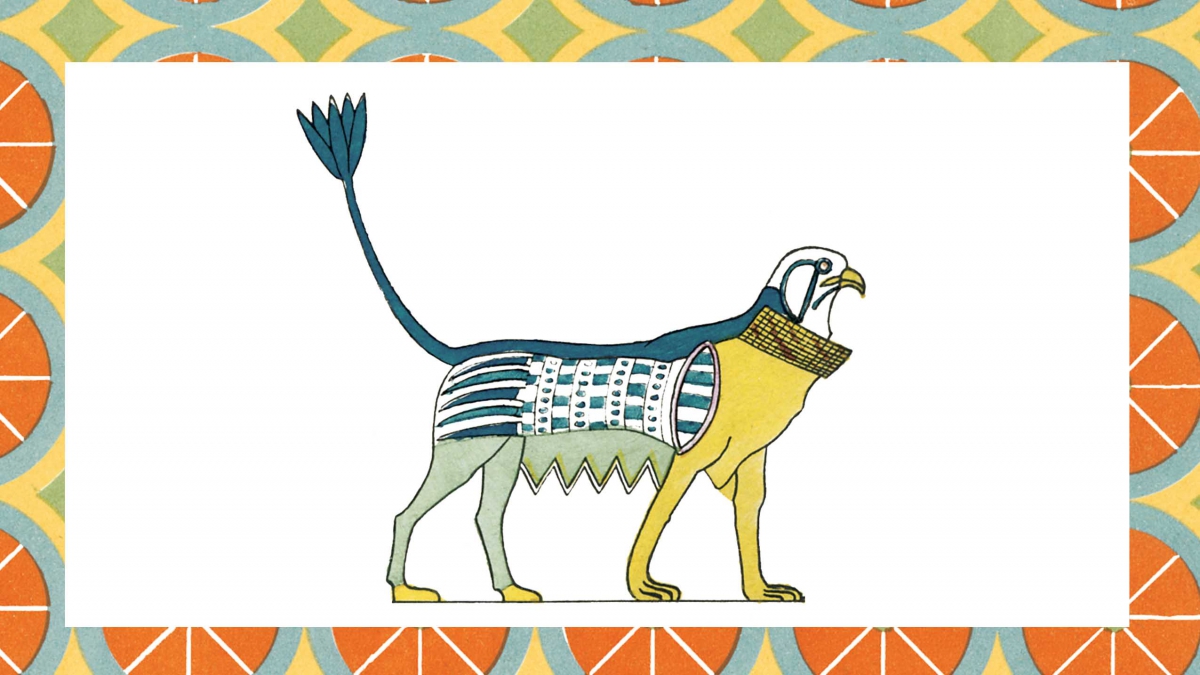Images of Gods
Ancient Egyptian gods could manifest themselves in human form, like the god Ptah, or as animals, like the sacred bulls, or as a combination of human and animal, like the Hawk-headed Horus, or the Ibis-headed Thoth. Most of the sacred images from the Age of the Pyramids have not survived the centuries, but a part of one, a golden falcon head, may have been made in the Sixth Dynasty, and the Great Sphinx, who represents a form of the sun god, has been guarding the pyramids for four and a half millennia.

Except for the king, human beings were not shown in the company of the gods. Though Osiris and Anubis are almost always mentioned in prayers for the dead, and the names of gods occur in titles and personal names, there are no images, reliefs or statues of gods in the tombs of nobles or craftsmen.
During the five hundred years of the Age of the Pyramids, there were changes in the way the king was shown in relation to the gods. In the Third and Fourth Dynasties, the king appears in the company of the gods. For example, King Qahedjet of the Third Dynasty was shown in a relief as equal in size and importance to Horus who embraces him as a friend. In the Fourth Dynasty, Menkaure stands shoulder to shoulder with the goddess Hathor. Nome gods, who were in charge of particular places, were shown smaller than the king. During the Fourth Dynasty, the king took the title Son of Re, asserting an intimate connection with the most powerful of the gods. By the Sixth Dynasty, however, the king could be shown kneeling in front of the gods, making offerings to them. This more humble posture suggests that royal power and authority had diminished.
